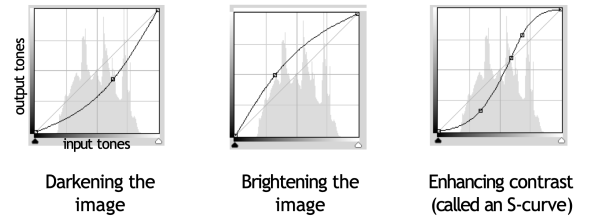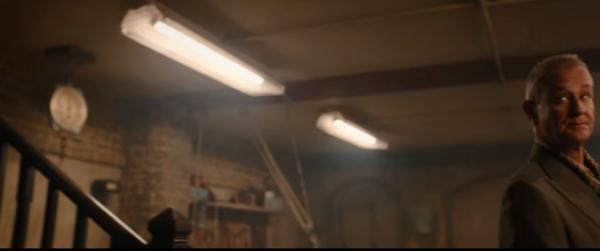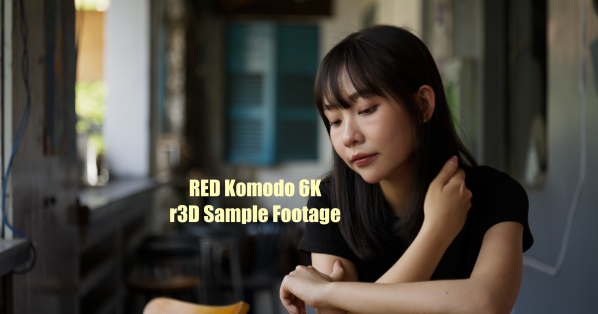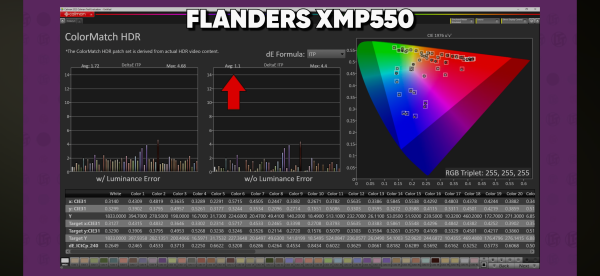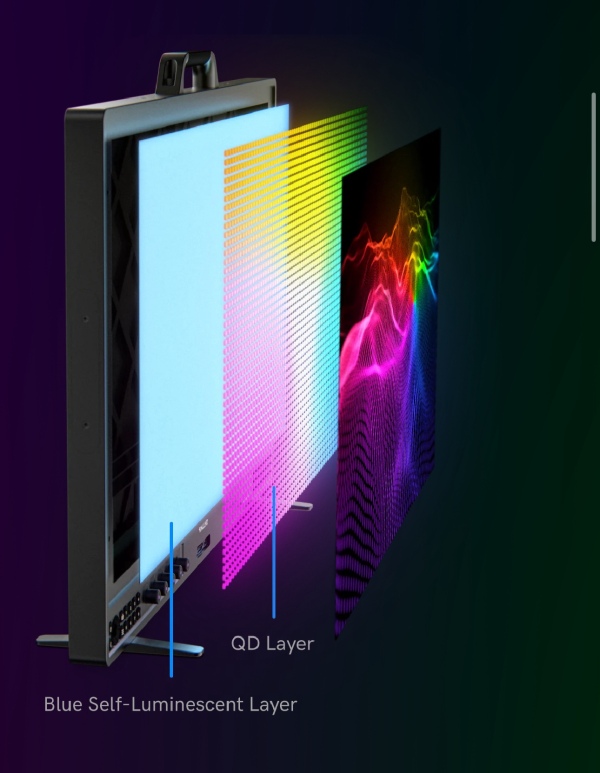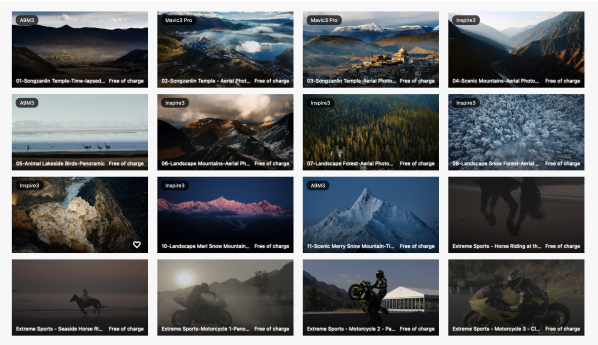We’ve heard respected colorists say that HDR is no more than an effect added in post and that the cinematographer doesn’t have to do anything differently on set. Similarly, there are DPs who insist that all you’ve got to do is expose for 18% gray and let the rest roll off. Neither of which is... Continue Reading →
Improve Netflix Streaming Quality
Upgrade Internet Service If you've got a terminally slow internet connection, you might consider upgrading your service. The recommended speed for UHD is 15 Mbps or higher. Before upgrading service After upgrading service From a web browser Check Account Settings Go to Playback Settings and make sure Data Usage per screen is set for the... Continue Reading →
UHD: A Proposal For Eliminating Spatial Artifacts
https://youtu.be/15eAcoKnuwA One of the chief goals of UHD was to increase the field of view, providing a more immersive experience. The optimal distance for standard definition is 6 picture heights (PH), for HD, it's 3 PH and for 4K UHD it's 1.5 PH. Edward Reuss, in a paper published in the SMPTE Motion Imaging Journal,... Continue Reading →
The Worst Practice In The Industry, Revisited
“If you come to me tomorrow and you say ‘Hey, I’ve got an HDR project I’d love to grade with you,’ I’ll say ‘Okay cool’, and very early on in the process I’m going to say ‘Let’s set our speed limit in terms of luminance.’ And if you ask me for my take and you... Continue Reading →
Compare Dolby Vision Derived SDR Version To HDR10 Video
https://youtu.be/H_SChOvwIW0 HDR10 version Dolby introduced an improved tone mapping analysis algorithm that first appeared in DaVinci Resolve Studio 18.6. If you'd like to compare the Dolby Vision derived SDR version to the HDR10 video above, click here. As far as we can tell, it only appears to be playable on Dolby Vision enabled devices, because... Continue Reading →
Apple TV (3rd gen) Crackling Noises & Sony Bravia A95L
https://youtube.com/shorts/AJDws7yZBHM?feature=share We reached out to Sony concerning crackling sounds and audio dropouts when watching Netflix and Apple TV+ shows with the Apple TV media player. We also informed Sony that many others have experienced similar issues with Apple TV and different brands of televisions and that the problem might not be with our Bravia A95L.... Continue Reading →
How To Normalize ETTR Footage: A Brief Update
Ever since picking up a RED Komodo, we’ve vacillated between two procedures for normalizing ETTR RAW footage: either reducing the ISO in the RAW tab of the color page in DaVinci Resolve or using custom curves. To correct overexposure in post with custom curves, all you’ve got to do is create a gentle convex curve,... Continue Reading →
Why Netflix Dolby Vision Looks Like Puke, Part I
In HDR video, there is no artifact more repugnant than blown-out highlights. All that is required to avoid them is for the DP not to clip the signal, but many simply refuse to learn their craft. These issues ought to have been spotted during pre-production or when reviewing dailies and they most certainly should not... Continue Reading →
Nikon to Acquire US Cinema Camera Manufacturer RED.com, LLC
Accelerating Expansion in Professional Digital Cinema Camera Market March 7, 2024 TOKYO - Nikon Corporation (Nikon) hereby announces its entry into an agreement to acquire 100% of the outstanding membership interests of RED.com, LLC (RED) whereby RED will become a wholly-owned subsidiary of Nikon, pursuant to a Membership Interest Purchase Agreement with Mr. James Jannard,... Continue Reading →
The Benefits Of Shooting 8K
Alister Chapman writes about the advantages of 8K and muses whether The Creator shouldn’t have been shot on the Sony A1 rather than the FX3: “Since the launch of Burano I've become more and more convinced of the benefits of an 8K sensor - even if you only ever intend to deliver in 4K, the... Continue Reading →
NBCU Sr. Colorist: HDR Will Make Your Eyes Bleed
Perhaps the dumbest colorist we've had the displeasure of listening to since Maxine Gervais. Like nearly all SMPTE productions, the audio and video quality of the presentation are complete and utter garbage. "Most of the clients that I have that come in, they don't like HDR straight away, and the reason that they don't is... Continue Reading →
Calman Must Be Used On A Windows-Based PC
Apparently, Calman doesn’t work on Macs with Apple Silicon after all, though Bram Desmet (CEO, Flanders Scientific) says this configuration works for him in both Calman and ColourSpace: M2 Max. Sonoma 14.1.1. Parallels for Mac. Windows 11. Calman announced on back on Oct. 5, 2023: “While there are Apple Silicon specific versions of VMWare Fusion... Continue Reading →
Free Download: RED Komodo R3D RAW Sample Footage
https://youtu.be/kKSrUCp4NsA R3D RAW HDR Video Details: Model: Ngô Hài Hà. RED Komodo 6K. Meike super35 50mm T2.1 Cinema Prime. Kolari ND3. 6K 17:9 R3D MQ ISO 400, 24 FPS, T2.1. Edited in DaVinci Resolve Studio 18.6. MacBook Pro (late 2021), LG CX. ISO changed from 400 to 250 in post. No noise reduction.
Flanders XMP550 Staggering Color Accuracy
The Flanders XMP550 QD-OLED reference mastering monitor vs. the Sony Bravia XR A95L on Calman’s rigorous ColorMatch test, which measures the performance of the display with samples extracted from true HDR content. Both displays use panels from Samsung Display. The Flanders was measured by Linus Tech and the Sony measurements are from Digital Day. Pretty... Continue Reading →
My Adventure Downloading Free Sample Footage From MediaStorm
https://daejeonchronicles.com/2024/02/17/tons-of-free-sample-footage Check out our post about MediaStorm here In the morning, I went to the market, found someone who had WeChat, they scanned my QR code to verify me and I went ahead and followed MediaStorm on the app. Then I had a delicious bowl of crab noodle soup at the market. Later, I signed... Continue Reading →
First Look: SmallHD Quantum 32 monitor
Quantum 32 is the result of a partnership between SmallHD and Samsung Display Corporation to create an HDR reference monitor that meets the requirements of motion picture production and post. SDC has pioneered quantum dot OLED, utilizing Nobel Prize-winning nanotechnology to achieve unparalleled color and dynamic range.
Tons Of Free Sample Footage!
Can never get enough sample footage. The super generous folks over at the YouTube channel MediaStorm are offering an unprecedented amount at ysjf.com - much of it for free! https://youtu.be/sAWK0mgrMp4?si=_jz3rHyP00hOGV-stheb



